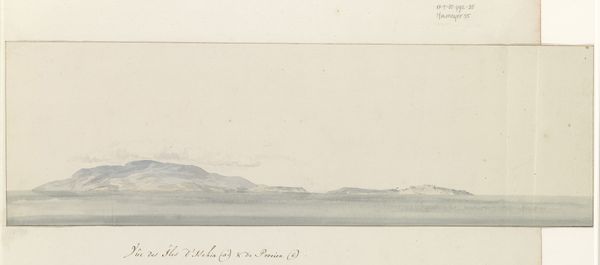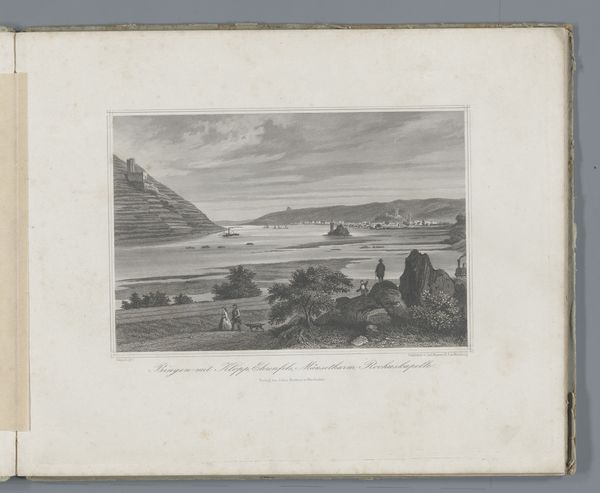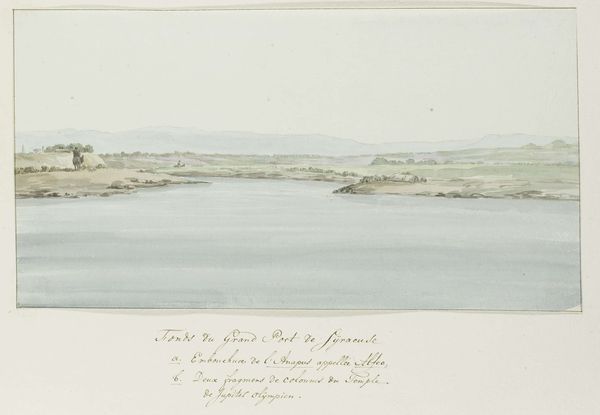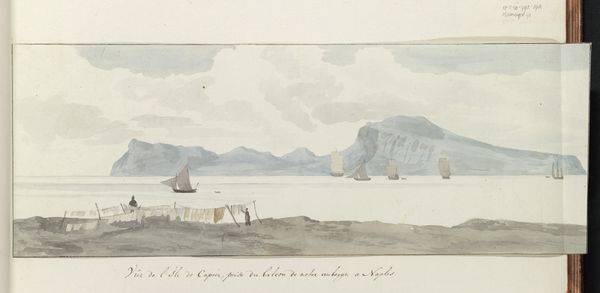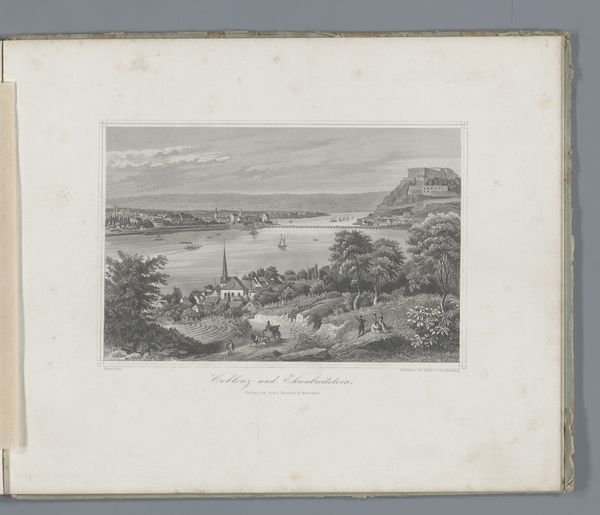
drawing, pencil
#
drawing
#
amateur sketch
#
neoclacissism
#
aged paper
#
light pencil work
#
pencil sketch
#
sketch book
#
incomplete sketchy
#
hand drawn type
#
landscape
#
personal sketchbook
#
pencil
#
sketchbook drawing
#
cityscape
#
sketchbook art
Dimensions: height 168 mm, width 487 mm
Copyright: Rijks Museum: Open Domain
Editor: Here we have Louis Ducros’ "Havenhoofd van Napels, gezien vanaf de voet van de vuurtoren," a pencil drawing from 1778. There’s a quietness to this piece, a sense of everyday life captured in a quick sketch. How do you interpret this work, beyond it just being a landscape? Curator: What strikes me is not simply the depiction of Naples' harbor, but how it intersects with the burgeoning aesthetic of Neoclassicism and its implications for representing urban spaces. Ducros, in choosing this vantage point, seems to be engaging with Enlightenment ideals of order and clarity. How does the drawing’s composition reflect or challenge these ideals, do you think? Editor: I see the order, sure, in the linear perspective and the clear separation of planes. But the sketchiness, the lack of detail, almost undermines that sense of control. Curator: Precisely. And isn't that tension revealing? Consider Naples in 1778 - a city steeped in history but also facing socio-political unrest. Could Ducros be subtly commenting on the limitations of imposing an idealized order onto a complex reality? Is he showing us that a purely Neoclassical view neglects the lived experience of a city in flux? Editor: That’s a perspective I hadn't considered. I was so focused on the surface of the image. It makes me wonder about the people included. Are they just there to provide scale, or do they have another purpose? Curator: Think about who is represented, how they are positioned, and their relation to the architectural elements. These details can speak volumes about Ducros's own positionality and the power dynamics at play in representing the city. Editor: This drawing holds so much more than I initially realized! It's like peeling back layers of history and social commentary, just from looking closely at the composition and the artistic choices. Curator: Exactly! It's through these interrogations that we can unveil the complex narratives embedded within even the simplest-seeming landscape.
Comments
No comments
Be the first to comment and join the conversation on the ultimate creative platform.
